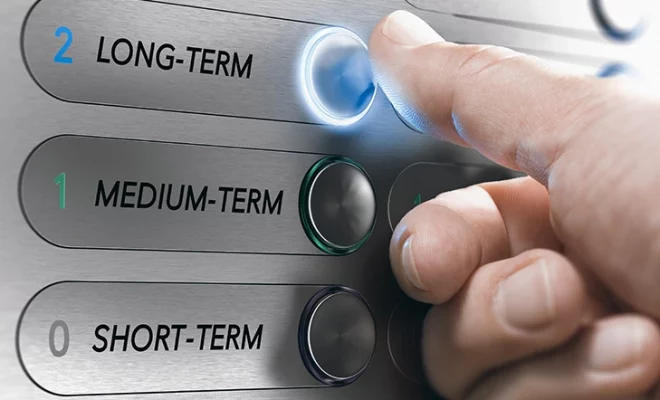6 Steps You Can Take To Invest Safely

Investing can help you grow your net worth and achieve financial goals that may seem unattainable on a salary. The income you earn is only one part of your financial status. How you use this income to invest in the market decides your overall financial standing to a large extent. Most people are not rich due to their salaries but because of their investment returns. So, understanding how and where you can invest your money is essential.
However, investing can also scare some people away. There is some level of risk involved in every investment. This can vary for different instruments. So, when the market booms, some of your returns may skyrocket. But an unprecedented turn can also bring your returns to an extreme low. Thankfully, for every high-risk investment option, there is a comparatively low-risk financial product for your hard-earned money. Additionally, there are also ways for you to lower risk by adopting specific strategies and approaches. If you wish to learn about low-risk investment instruments and strategies, you can reach out to a professional financial advisor who can guide you on the same. In this article, you can find out how to safely invest money and watch it grow with time.
Table of Contents
How to invest safely
There is no fixed route that you can take to ensure complete safety in investment. However, there are some ways to lower risk, amplify the chances of earning more returns, and above all, understand the market so you can make sound investment decisions.
You can use the following process to invest your money safely:
1. Know your financial goals:
Your goals are the foundation of your investment plan. If you invest according to your goals, you will have fewer surprises along the way. However, if you do not analyze your goals and instead invest your money without any planning, you may not be satisfied with the results. Every goal requires a distinct approach. A long-term goal, such as retirement, would require more time, relatively high-risk and return options, and a buy and hold strategy. However, if you are investing for a short or mid-term need, you would have to select investments that can deliver good returns over a shorter investment term. For this, you would need to choose relatively liquid options that do not incur penalties upon withdrawals. So, in order to invest safely, the first thing you can do is make a list of your goals and understand what steps you need to follow to achieve them. This will help you plan and prepare for the journey ahead. Moreover, the more you plan, the more confidence you have in your decisions and the less stressed you are about your future. Confidence plays a critical role in investing as it eliminates the scope of making decisions based on emotions, panic, fear, etc. So, make sure to identify, understand, and evaluate your goals in depth.
2. Invest as per your risk appetite:
One of the ways to tame risk in your portfolio is to invest according to your risk appetite. Every investor has a risk appetite. This refers to the amount of risk or uncertainty you are willing to take to achieve your financial goals. When you are young, your risk appetite is generally the highest. It decreases as you age or near retirement. At an old age, you will likely find it hard to make up for an investment loss due to the lack of a job or the health and possibility to earn money. As a result, your risk appetite is rather low. However, when you are young, you can override investment losses because you have time on your side. When you have a long investment horizon, your money has more time to grow. It also has more time to earn profits against the losses and balance out your earnings. Further, you would have a job and an income to support yourself. So, even if you suffer from a loss in investment, you still have a source of income to support your needs.
Your risk appetite can fluctuate all your life. Therefore, your investment portfolio must reflect it at all times. Ideally, financial experts recommend following the rule of 100, where you can subtract your age from 100 to determine your asset allocation. There are three primary asset classes – stocks, bonds, and cash. To determine the percentage for each, you can follow the formula given below:
Stocks = (100 – Your Age)
So, if you are 40 years old, you can have 100 – 40 = 60% of your money in stocks and the remaining 40% in bonds and cash.
Keep in mind that stocks or equity represent high-risk investments, while debt and cash represent low-risk options. So, as you age, your equity allocation is ideally supposed to decrease. Following the formula shared above, this can be 50% in stocks and 50% in others at the age of 50, 40% in stocks and 60% in debt and others at the age of 60, and so on.
3. Learn as much as possible:
If you want to know how to invest safely, you must understand the financial products you are putting your hard-earned money in. This can be done by learning as much as possible about the various options in the market. Financial jargon, figures, definitions, etc., can seem a bit intimidating. However, the sooner you learn to make sense of them, the better it can be for you. When you understand what a product entails, you can make a mindful decision to invest in it. For instance, Non-Fungible Tokens (NFTs) are gaining a lot of popularity as cryptocurrencies are taking over the world. There is even debate about whether or not they will overcome fiat currencies. What lies in the future is speculative. However, making bets on your future financial security is encouraged only if you truly understand a product. Whether you invest in an NFT or a stock, research what the product represents, its past and future prospects, the potential of the industry, your personal risk appetite, and more. This will help you align your expectations in the right direction. If you are unsure about how or where to start, you can also consider hiring a financial advisor. You can sit with the professional and clear your doubts, get an expert’s opinion on matters, and make better financial decisions in general. You can also read magazines and subscribe to financial podcasts, blogs, journals, and more. Talking to family and peers also helps. However, make sure to refer to authentic and verifiable sources only.
4. Pick investments with lower costs:
The costs associated with a particular investment product can amplify its risk as it cuts the overall profit. Therefore, try to pick products with lower fees. Some investments may charge you a maintenance fee, administration fee, account opening fee, exit fee, etc. All of these can seem meager but can add up to a lot in the long run. So, pay attention to these costs and try to minimize them whenever possible. For instance, you can select a broker or a plan administrator who charges the least in the case of an Individual Retirement Account (IRA) or a mutual fund. Do not ignore the broker’s commission or the per-transaction cost when trading in stocks.
Taxes are also a critical component of investment. High taxes can interfere with your returns. Therefore, it is vital to understand the taxability of your investments and plan your contributions and withdrawals accordingly.
5. Buy insurance:
Insurance is one of the safest investment options out there. You can consider investing in good insurance products if you are wondering how to safely invest money and protect your future financial security. There are different types of insurance products like term insurance, health insurance, annuity plans, etc. While insurance may not offer you a direct return as with other investments, it is still a vital investment for your future. It can help cover the costs of healthcare, protect your loved ones, and offer a regular flow of income in retirement.
6. Diversify your investment portfolio:
Diversification is essential to reduce risk and add more safety to your investment portfolio. A diversified portfolio ensures that your money is spread across different investment options, thereby distributing risk across verticals. Different products react differently to the market’s ups and downs. Therefore, by diversifying your portfolio, you end up lowering the chances of suffering from a loss. Even if some investments perform poorly, others may perform well, and your overall return will stabilize. When you diversify your portfolio, you can try to add different asset classes, such as equity, debt, cash, real estate, gold, etc. You can also add different sectors and industries. If you own stocks, you can invest in real estate, technology, healthcare, hotels, etc. Investing in companies from different market capitalizations can also help.
Best way to invest 100k safely
There are several investment options that you can consider to invest 100k. And while there is no right or wrong option, you can view the following products:
1. Index funds:
Index funds are passive, low-risk funds that can be a good low-risk investment option. Index funds mimic a benchmark and deliver returns according to the performance of the benchmark. They do not aim to outperform the benchmark but simply deliver the same returns. This is one of the reasons why they are low risk in nature. The stock allocation of index funds is more or less the same as the underlying index. The fund manager does not make active buying and selling decisions. Instead, they only manage the fund according to the benchmark.
2. Bonds:
Bonds are debt instruments and, therefore, low on risk. You can invest in different types of bonds, such as government, municipal, or corporate bonds. They are relatively low-risk and can be used to diversify your portfolio and lower your exposure induced by stocks. They are also ideal for retirees or those nearing retirement as the returns are steady with minimal risk involved.
3. Real estate:
If you have as much money as $100k, you can consider real estate as an investment. Real estate may have certain risks. However, with proper planning and research, it can be a viable option. Real estate can be a family asset that can secure generations together. Moreover, it has massive potential for growth. It can also be resold. Further, real estate can be used as an income-generating asset. You can rent or lease it. Commercial properties have even better prospects and can be used to create a second source of income.
4. Retirement accounts:
The company-sponsored 401k and the IRA can also be great options. While the contribution limits may not allow you to invest $100k all at once, you can still consider it a safe investment option. 401ks also offer employer contributions that can double the benefit. Moreover, IRAs and 401ks are both tax-advantaged accounts. So, you can use them to save on tax. If you use traditional accounts, you would be able to save on tax in the present and pay it in retirement. If you select Roth accounts, you would have to pay tax in the present and save on tax in retirement through tax-free withdrawals.
There are many more options like certificates of deposits, money market accounts, mutual funds, and more. However, no matter what you choose, make sure to diversify your portfolio, as explained above. So, instead of investing $100k in one product, you can allocate it to multiple assets. Further, it is also essential to clear all your debt obligations and dues if you have lump sum money before you start investing.
To summarize
Knowing how to safely invest money is not a rigid guide. All you need to do is follow a disciplined and dedicated route to investing, and you can ward off most risks. Having said that, it is essential to be realistic and understand that you cannot completely eliminate risk from investing. Highs and lows are inevitable. But keeping a long-term investment approach can be helpful in overriding most of these lows.
However, if you feel like you need further help, you can consider hiring a professional financial advisor in your area. Use WiserAdvisor’s free advisor match service to find highly qualified and vetted wealth advisors who can guide you on the same. Answer a few questions about yourself and get matched with 1-3 wealth advisors that are suited to meet your financial requirements.


















